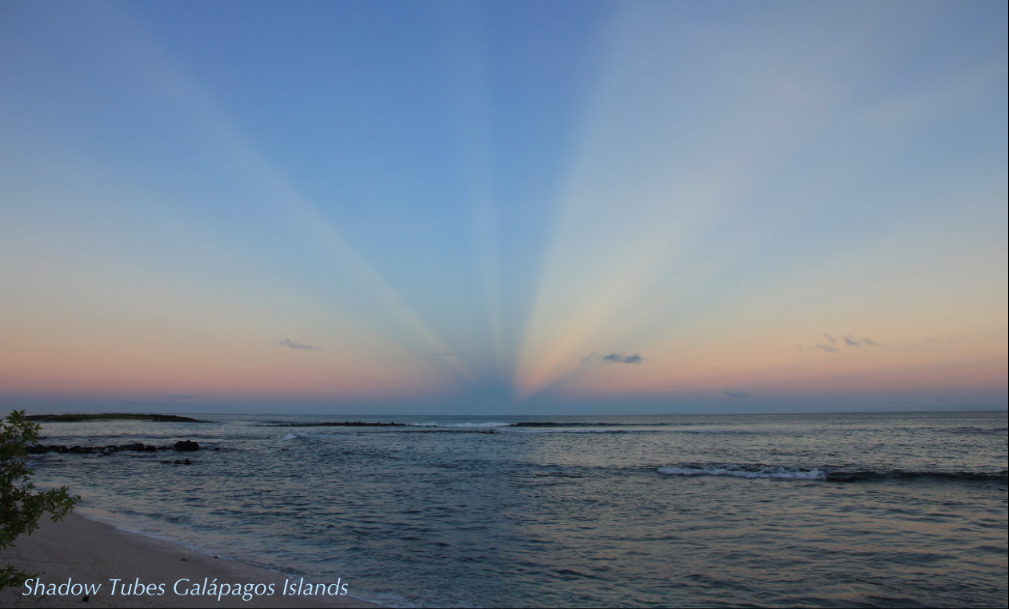Antisolar rays Galapagos Islands
Antisolar Rays in the Galapagos Islands: A Fascinating Atmospheric Phenomenon
When witnessing the mesmerizing beauty of the Galapagos Islands, one may be fortunate enough to observe a captivating atmospheric spectacle known as antisolar rays. Also referred to as anticrepuscular rays, these awe-inspiring beams of light play a visual trick on our minds, appearing as tubes or rods of shadowed air cast by clouds in the sunward sky. They converge at a point opposite to the sun, aptly named the antisolar point (ASP). In this article, we will delve deeper into the phenomenon of antisolar rays in the Galapagos Islands, exploring their characteristics and the science behind their formation.
Visualizing the Enigmatic Antisolar Rays
Antisolar rays possess an enchanting quality that challenges our perception of space and distance. To fully appreciate their magnificence, imagine colossal parallel ducts of darkness streaming overhead, seemingly diminishing in size as they recede into the distance. Another way to visualize this phenomenon is by mentally flipping the entire scene vertically, transforming it into a desert road that narrows as it extends towards a distant horizon. Such mental exercises can enhance our understanding and appreciation of these ethereal rays.
The Science Behind Antisolar Rays
The formation of antisolar rays can be attributed to the interaction between sunlight and atmospheric particles, such as dust or water droplets, which scatter and redirect light in various directions. When clouds are present in the sunward sky, they act as obstructing agents, casting shadows onto the surrounding air. These shadowed areas become visible to us as the converging antisolar rays. The point where these rays intersect is the antisolar point, which lies directly opposite to the position of the sun.
Atmospheric Conditions Favoring Antisolar Rays
While antisolar rays can occur under various atmospheric conditions, certain factors contribute to their prominence and visibility. Here are some key conditions that enhance the formation and visibility of antisolar rays in the Galapagos Islands:
- Presence of scattered clouds in the sunward sky: Clouds play a crucial role in casting shadows and creating the striking visual effect of antisolar rays.
- Low sun angle: When the sun is positioned closer to the horizon, the length of the antisolar rays becomes more pronounced, intensifying their visual impact.
- Clear visibility: Unobstructed views of the sky allow for better observation of antisolar rays, making the Galapagos Islands an ideal location due to their pristine and unpolluted environment.
The Galapagos Islands: A Haven for Antisolar Ray Observations
Situated in the Pacific Ocean, the Galapagos Islands offer a unique setting for observing atmospheric phenomena such as antisolar rays. The islands' remote location and minimal light pollution provide an optimal environment for capturing these elusive rays on camera. Additionally, the diverse landscapes and ever-changing cloud formations in the Galapagos create a captivating backdrop for witnessing this natural spectacle.
Capturing Antisolar Rays: Photography Tips
If you find yourself in the Galapagos Islands and wish to capture the beauty of antisolar rays through photography, here are a few tips to consider:
- Choose the right time: Antisolar rays are most visible during sunrise or sunset when the sun is closer to the horizon.
- Frame your shot: Look for interesting foreground elements, such as silhouettes of trees or rock formations, to enhance the composition and add depth to your photographs.
- Experiment with exposure: Adjusting your camera's exposure settings can help capture the subtle nuances of light and shadow in antisolar ray images.
Appreciating Nature's Wonders
The Galapagos Islands have long been celebrated for their rich biodiversity and unique geological features. However, they also offer a stunning display of atmospheric optics, with antisolar rays gracing the skies on certain occasions. Witnessing and understanding these captivating phenomena remind us of the intricate interplay between light, particles, and the Earth's atmosphere. By taking the time to appreciate and learn about these natural wonders, we gain a deeper appreciation for the beauty and complexity of our world. So, the next time you find yourself in the Galapagos Islands, keep an eye on the sunward sky and be prepared to be enchanted by the mesmerizing dance of antisolar rays.

Gerard Kelly (site) took this dawn image looking westwards from San Cristóbal Island.
The phenomenon is more accurately labelled 'antisolar' or 'anticrepuscular' rays. But tubes or rods of shadowed air they are. The are cast by clouds in the sunward sky and meet at the ASP, antisolar point.
When you next see them play a trick with the mind. Picture them as colossal parallel ducts of darkness streaming overhead and looking smaller and smaller as they get more distant.
Or better, flip the whole scene vertically and see them as a road from a high driving position. Below, Gerard Kelly's scene has been flipped into a desert road funnelling towards a distant horizon.

Note: this article has been automatically converted from the old site and may not appear as intended. You can find the original article here.
Reference Atmospheric Optics
If you use any of the definitions, information, or data presented on Atmospheric Optics, please copy the link or reference below to properly credit us as the reference source. Thank you!
-
<a href="https://atoptics.co.uk/blog/antisolar-rays-galapagos-islands/">Antisolar rays Galapagos Islands </a>
-
"Antisolar rays Galapagos Islands ". Atmospheric Optics. Accessed on November 26, 2024. https://atoptics.co.uk/blog/antisolar-rays-galapagos-islands/.
-
"Antisolar rays Galapagos Islands ". Atmospheric Optics, https://atoptics.co.uk/blog/antisolar-rays-galapagos-islands/. Accessed 26 November, 2024
-
Antisolar rays Galapagos Islands . Atmospheric Optics. Retrieved from https://atoptics.co.uk/blog/antisolar-rays-galapagos-islands/.